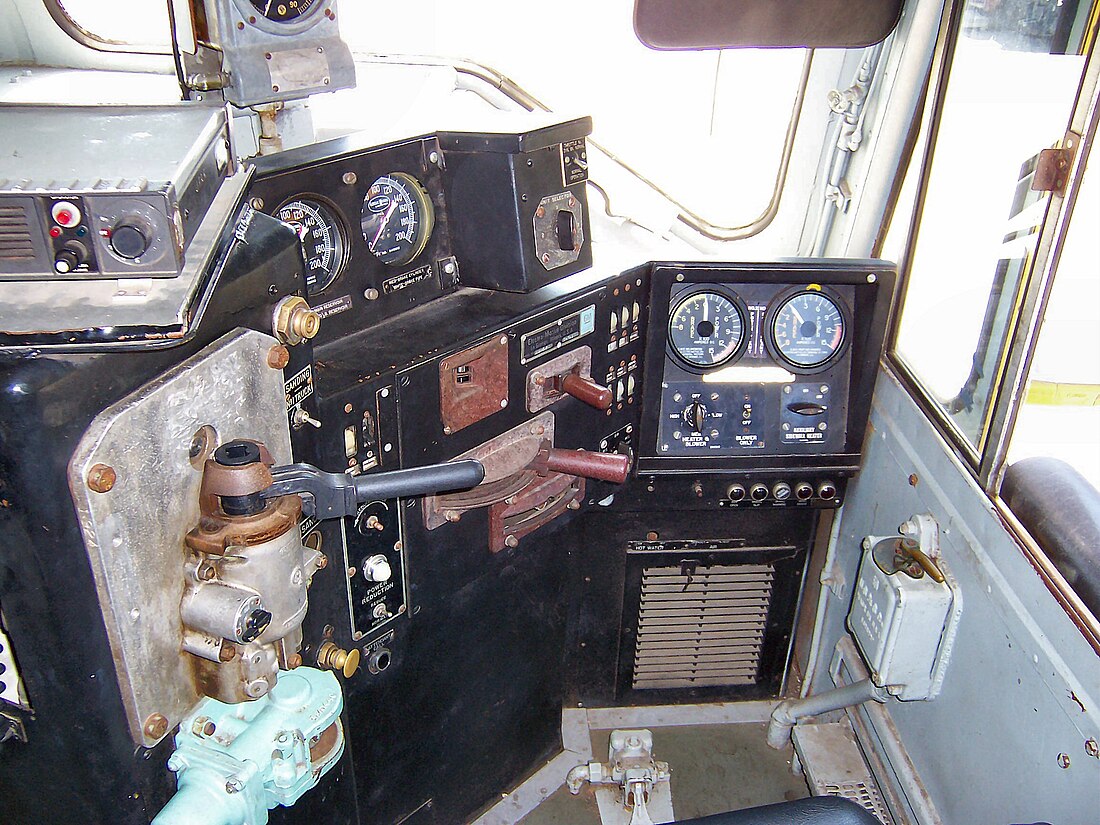Top Qs
Timeline
Chat
Perspective
Control stand
Diesel-electric locomotive subsystem which integrates engine functional controls From Wikipedia, the free encyclopedia
Remove ads
A control stand is a diesel-electric locomotive subsystem which integrates engine functional controls and brake functional controls,[1] whereby all functional controls are "at hand" (within reach of the locomotive engineer from their customary seating position, facing forward at all times).[2] The control stand can be on either the left or right hand side of the cab, depending on region.

Normally, a control stand is oriented in the direction labeled "F" (front of the locomotive). Although front is usually the "short hood," a seldom-used alternate designates the "long hood" as front, such as on the Victorian Railways X class. Where operations in both directions are required, two control stands ("dual control stands") may be provided.[3]

The early control stands were designed to Association of American Railroads (AAR) standards. The traditional AAR control stand is still preferred by some railroads. Current control stands may employ multiple displays and electronic actuation of operational controls from an all-electronic desktop.[4][5][6]
Remove ads
See also
References
Wikiwand - on
Seamless Wikipedia browsing. On steroids.
Remove ads
